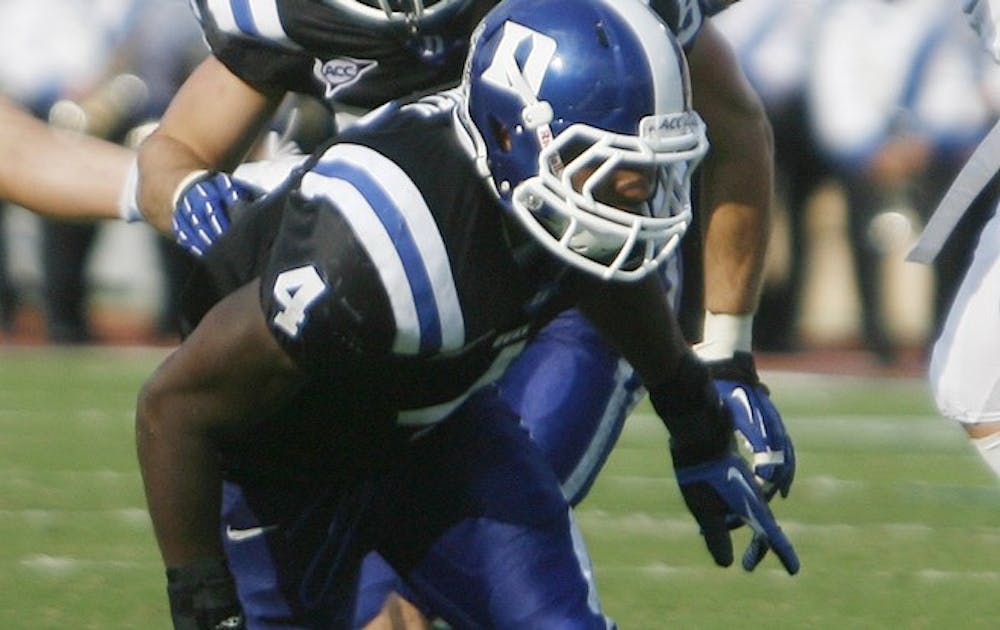After demolishing Virginia 42-17, Duke’s offense is averaging 45 points in its four home games. Although Anthony Boone performed admirably stepping up in place of the injured Sean Renfree, the team’s remarkable second-half defense made at least as much of an impact.
Head coach David Cutcliffe was impressed with both his offense and defense, but said the way that all three units—offense, defense, and special teams—contributed in tandem was the best part of the victory.
“We got stopped on offense after a nice drive to open up the second half, and we punted them back deep,” Cutcliffe said. “The defense went out there and did their job—pinned them back deep. They punted it—Conner [Vernon] has a 25-yard punt return to set up great field position, and the offense immediately takes it in and scores. That’s good football. That’s what we have been striving for.”
The sequence Cutcliffe described, on which Duke took the lead for good, certainly changed the game, but in many ways the afternoon’s defining moment came on the ensuing possession.
After advancing close to midfield, Virginia faced a fourth-and-one near midfield trailing by just four points. The offense, not the punter, took the field. After having established the run so effectively in the first half, the Cavaliers seemed sure to run in the short yardage situation. At least so thought senior captain Walt Canty, who led the defense with 13 tackles and registered three tackles for loss on the day, one of which came on that play to give his offense the ball.
“I wasn’t supposed to blitz, but I took a chance, and sometimes it works out,” Canty said. “They had been running the ball well on us. They had a lot of yards, so I figured they’d try it again. It was just one yard and they figure they can get it, so I just picked the right gap.”
Duke wasted little time converting the opportunity into points. The Blue Devils covered the 45 yards with a pass interference penalty and four Jela Duncan rushes in just a minute and a half. The score gave Duke momentum for the rest of the way, energizing the crowd and the team.
More importantly, Duncan’s touchdown run gave Duke its first two-score lead, forcing the Cavaliers to abandon the ground game. In the first half, Virginia had rushed 26 times for 184 yards. After halftime, the Blue Devils held them to two yards on nine rushes.
“What helps that is our offense responding and putting points on the board and forcing them now to have to throw the football,” Cutcliffe said. “That put us in the advantage at that point in time.”
Effectively shutting down the run on first and second down proved crucial in bringing up more difficult third down situations. In the first quarter, the Cavaliers went 3-for-3 on third down en route to two touchdowns, largely because they needed an average of just two yards to convert for the first down. Virginia would go on to finish the game an atrocious 4-for-16 on third down.
“You can play third-and-10 a lot better than you can play third-and-four,” defensive coordinator Jim Knowles said. “It gives you a lot of options…. We started mixing it up a little bit. We started playing less man coverage and backing off a bit.”
Schematically, Duke will be forced to make adjustments like this one in all of its games. The ability to do so will depend dramatically on the coordination of the game’s three phases. For the Blue Devils to reach their goal, they must put together complete efforts like Saturday’s.
Get The Chronicle straight to your inbox
Signup for our weekly newsletter. Cancel at any time.

